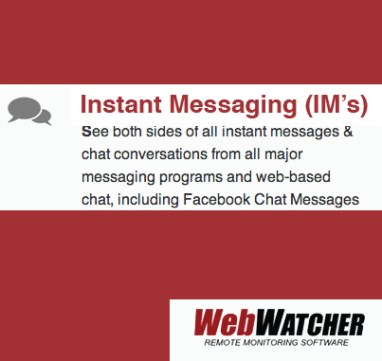According to statistics from Pew Research Center, more than half of teens have been the victim of cyberbullying. But why has this dangerous behavior become so prevalent?
Pew also reports that nearly all of American teens (a whopping 95 percent!) have a smartphone. Access to the internet, to social media and to constant connection to friends exists non-stop. It’s nearly impossible to know everything a teen does via that smartphone, and many parents wonder how to track a phone number for content monitoring.
Some parents wish to track a phone number in secret, but others want their teens to know that they are being watched. Make sure you know the right way to talk to your teen about monitoring software,
So what is the right way to track a phone number? Should teens know they are being supervised online?
How to Track a Phone Number: Staying Stealthy?
Going under the radar to track a phone number may seem like a sneaky option for parents.
However, it isn’t the best option, and there also may be legal implications.
Monitoring a smartphone should not mean spying on your teens. When you utilize monitoring apps and software, you may have access to all your teen’s messages, internet history, screenshots and other information.
But how do you confront a teen about misbehavior without admitting that you’ve been monitoring (or, in their eyes, spying)?This is where monitoring can become extremely problematic.
When trust is violated, teens may act out in other ways. And parents may soon understand that their teen is less likely to come to them about problems and concerns. Once trust is broken, it’s difficult to mend.
Unfortunately, parents tend to see monitoring in a “gotcha” sense instead of as a proactive and protective condition for smartphone ownership. So should you track a phone number without disclosing? No.

How to Track a Phone Number…the Right Way
Monitoring apps and software should mean full disclosure to teens. Before you even hand over the new phone, be sure they understand that monitoring is a condition of smartphone ownership. And get all the rules in writing, too!
Create a written contract that outlines all the rules and responsibilities of owning a smartphone. This could include time limitations as well as smartphone boundaries (no phones while driving, at dinner, etc.).
Smartphone monitoring also should be outlined. Be sure to include all the content that will be reviewed. Make sure they also understand the dangers of sexting, the practice of sending sexually explicit messages and photos.
Typically, parents wish to monitor:
- Texts
- Pictures
- Social media messages
- Screen shots
- Internet history
- Call history
- Contacts
However, some parents review more or less information. And many parents also want GPS tracking as a safety precaution. Whatever you want to monitor—or plan to track—always disclose it to your teen.
What if your teen adamantly refuses to be monitored? You can’t force your teen to submit to tracking or monitoring. But if utilizing monitoring software is your preference, you could make this a condition of cell phone ownership.
Parents also should ensure teens that monitoring is temporary, because it should not be permanent. Monitoring or phone tracking isn’t meant to be a long-term solution. Eventually, your teen will become an adult. As an adult, they will need to understand the rules and boundaries of the internet and social media. They will have to navigate the laws of the world solo.
As a parent, the primary job is to help teens become successful, independent and responsible adults. Monitoring should be used to guide them and help them understand what behaviors are acceptable and what is problematic (and, perhaps, dangerous). Use tracking to open a discussion. If you discover something that crosses boundaries—like an inappropriate text or image—sit down with your teen and discuss it.
Of course, any problematic behaviors also may warrant consequences. When you create a written cell phone agreement with teens, parents need to include consequences of rule breaking.
Of course, the punishment should fit the crime. Talking too long or staying up late to play a game should not hold the same consequence as texting while driving or other dangerous behaviors.

Red Flags of Dangerous Behavior
While monitoring programs give parents a glimpse of their teen’s online behaviors, there also could be other warning signs that bullying may be affecting your teen. You can often see text messages and social media messages, but not all apps can be monitored completely.
Normally, monitoring software can show parents incoming messages from Kik and Facebook messenger, and there are bullying red flags that you can’t ignore.
Parents however can’t see what their kids send to others. So if your child is the one who is bullying online, you might not be aware. Incoming messages, though, could be a clue.
Parents need to be diligent in other ways. Talk to kids about what it means to bully. This isn’t just about name calling or rumors. Modifying pictures or sharing embarrassing photos also can be considered bullying.
If you find out your teen is bullying others, you need to put a stop to it immediately. There is no excuse for abuse. Take away the phone, pull their internet privilege, take car keys. Do what you need to do to put a stop to it. Make it very clear that the consequences of bullying will be swift…and serious.
Be sure kids know that what they send cannot be undone. No matter what they think, the internet is forever. They may never know who is screengrabbing their photo or message. Or who shared their photo.
So how do you track a phone number? And how do you monitor your teen’s online footprints the right way? Have a conversation, disclose the monitoring and never track a teen in secret.
Spying is not ok. Secretly monitoring a teen’s cell phone destroys trust and breaks the parent/child bond. Before you hand over the smartphone, before they earn that privilege, write down the rules.
And include monitoring as a condition of owning and using a smartphone. Eventually, they will be on their own; use software to help them learn how to put their best digital foot forward. Webwatcher monitoring software can help!





